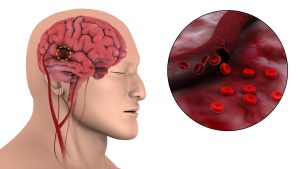- 31 January 2024
- 135
When Headaches and Nausea Strike: Exploring the Connection

Introduction:
Experiencing the double whammy of headaches and nausea can be more than just an inconvenience. It’s a common tandem, and its root causes are multifaceted. In this comprehensive exploration, we’ll dive deep into the various factors contributing to these simultaneous symptoms and unravel effective treatments for a holistic approach to relief.
Migraine: A Pervasive Culprit
Migraines stand out as the primary cause of headaches coupled with nausea. It’s estimated that 8 out of 10 individuals suffering from migraines also experience nausea during an episode. This neurological disorder not only induces throbbing head pain but is often accompanied by sensitivity to light, sound, and, of course, nausea.

The Migraine-Nausea Connection:
Research indicates that women and those predisposed to motion sickness are particularly prone to experiencing nausea with migraines. While the precise reasons for this gender disparity aren’t entirely clear, hormonal fluctuations are believed to play a significant role.
Migraines during Pregnancy:
Pregnancy introduces a complex dynamic. Some women notice a reduction in migraines, while others may experience an increase in headache frequency. The connection between migraines, pregnancy hormones, and nausea adds another layer of intricacy.

Cyclic Vomiting Syndrome (CVS)
While often associated with migraines, Cyclic Vomiting Syndrome (CVS) is a gastrointestinal disorder distinct from migraines. Primarily affecting children, CVS episodes involve severe nausea and vomiting. Interestingly, some individuals with a history of CVS during childhood develop migraines in adulthood.
Identifying CVS:
Recognizing CVS is crucial due to its distinct symptoms – sudden, severe episodes of nausea and vomiting that can last for hours or even days. Misdiagnoses, such as attributing it to food poisoning or stomach flu, are not uncommon.
Lifestyle Factors and Common Causes
Beyond migraines and CVS, various lifestyle factors can contribute to headaches and nausea. Understanding and managing these factors are essential for overall well-being.
Alcohol:
Excessive alcohol consumption can lead to morning-after symptoms, including severe headaches and nausea. Symptoms may include dizziness, sensitivity to light and sound, and even vomiting. Withdrawal from alcohol can also induce headaches and nausea.

Caffeine:
Whether it’s missing your morning coffee or attempting to reduce caffeine intake, withdrawal symptoms can include headaches and nausea. Additional symptoms may involve tiredness and difficulty concentrating.
Nicotine:
An excess of nicotine can result in headaches and nausea, with or without vomiting. Other symptoms may include a rapid heartbeat, chest tightness, and difficulty breathing.

Food Poisoning:
Consuming contaminated food can lead to headaches and nausea. Persistent vomiting can also result in dehydration, further exacerbating headache symptoms.
Other Conditions
Beyond lifestyle influences, several medical conditions can manifest as headaches coupled with nausea. Recognizing these diverse causes is crucial for accurate diagnosis and effective treatment.
Cold, Flu, or Stomach Infections:
These illnesses can induce nausea and severe headaches. Unlike migraines, additional symptoms such as a runny nose, diarrhea, chills, body aches, and fever are typically present.

COVID-19:
The coronaviruses responsible for COVID-19, SARS, and MERS exhibit symptoms like headache, nausea, vomiting, fever, cough, and breathing difficulties.
Low Blood Sugar:
Both low and high blood sugar levels can induce nausea and headaches. Unmanaged high blood sugar, particularly in individuals with diabetes, can lead to diabetic ketoacidosis, resulting in severe symptoms.

Medication Withdrawal:
Discontinuing certain medications, especially common antidepressants like Lexapro, Prozac, and Zoloft, can trigger headaches and nausea.
PMS and Menstrual Cycle:
Hormonal fluctuations during the menstrual cycle can result in throbbing headaches accompanied by nausea and sensitivity to light.
Preeclampsia:
High blood pressure during pregnancy may present with severe headaches, vision changes, belly pain, nausea, vomiting, and reduced urine output.
High Blood Pressure:
Very high blood pressure can cause severe headaches, nausea, and vomiting, leading to a hypertensive crisis or malignant hypertension.
High Elevations:
Altitude sickness, characterized by headaches and nausea, occurs when individuals ascend to significantly higher elevations.

Glaucoma:
Increased pressure inside the eyes can induce headaches, along with nausea and vomiting.
Rare Causes: Uncommon Contributors
While less common, various conditions may lead to headaches and nausea. Awareness of these rare contributors is crucial for a thorough understanding.
Inner Ear Infection
Carbon Monoxide Poisoning
West Nile Virus
Toxic Shock Syndrome
Dengue Fever
Black Widow Bite
Cluster Headaches
Brain Bleeding
Brain Injury
Brain Tumor
Brain Infection
Acoustic Neuroma
Malaria and Yellow Fever
Hepatitis A
Fifth Disease
Kidney Disease

Treatments for Headaches and Nausea
Managing headaches and nausea involves a combination of lifestyle adjustments, stress reduction, dietary modifications, and medical interventions.
Stress Reduction:
Stress is a common trigger for nauseating headaches. Implementing stress-reduction techniques can potentially alleviate the severity and frequency of attacks.
Smoking Cessation:
Quitting smoking can contribute to overall health and may reduce the frequency of headaches and nausea.

Dietary Adjustments:
Keeping a diary to identify potential food triggers, such as chocolate and alcohol, is essential. Maintaining a balanced diet is crucial for overall well-being.
Adequate Sleep and Rest:
Ensuring sufficient sleep and rest is fundamental for managing headaches and nausea.
Medication:
Physicians may prescribe preventive medications for chronic headaches, especially in the case of migraines. Symptomatic relief can be achieved through medications designed to stop headaches or alleviate accompanying symptoms. Anti-nausea medications, available in various forms, can be administered during headache episodes.

Complementary Treatments:
Biofeedback and acupuncture have shown promise in easing migraines and related symptoms, including nausea. Integrating these complementary treatments For other Health problems, under medical supervision, may offer additional relief.
Conclusion
Understanding the complexity of headaches and nausea requires a comprehensive approach that considers various causes, from migraines to lifestyle factors and underlying medical conditions. Identifying the specific triggers empowers individuals to seek tailored treatments, ultimately enhancing their overall well-being and minimizing the impact of these simultaneous symptoms. If you are experiencing persistent headaches and nausea, consulting with a healthcare professional is crucial for accurate diagnosis and effective management.

